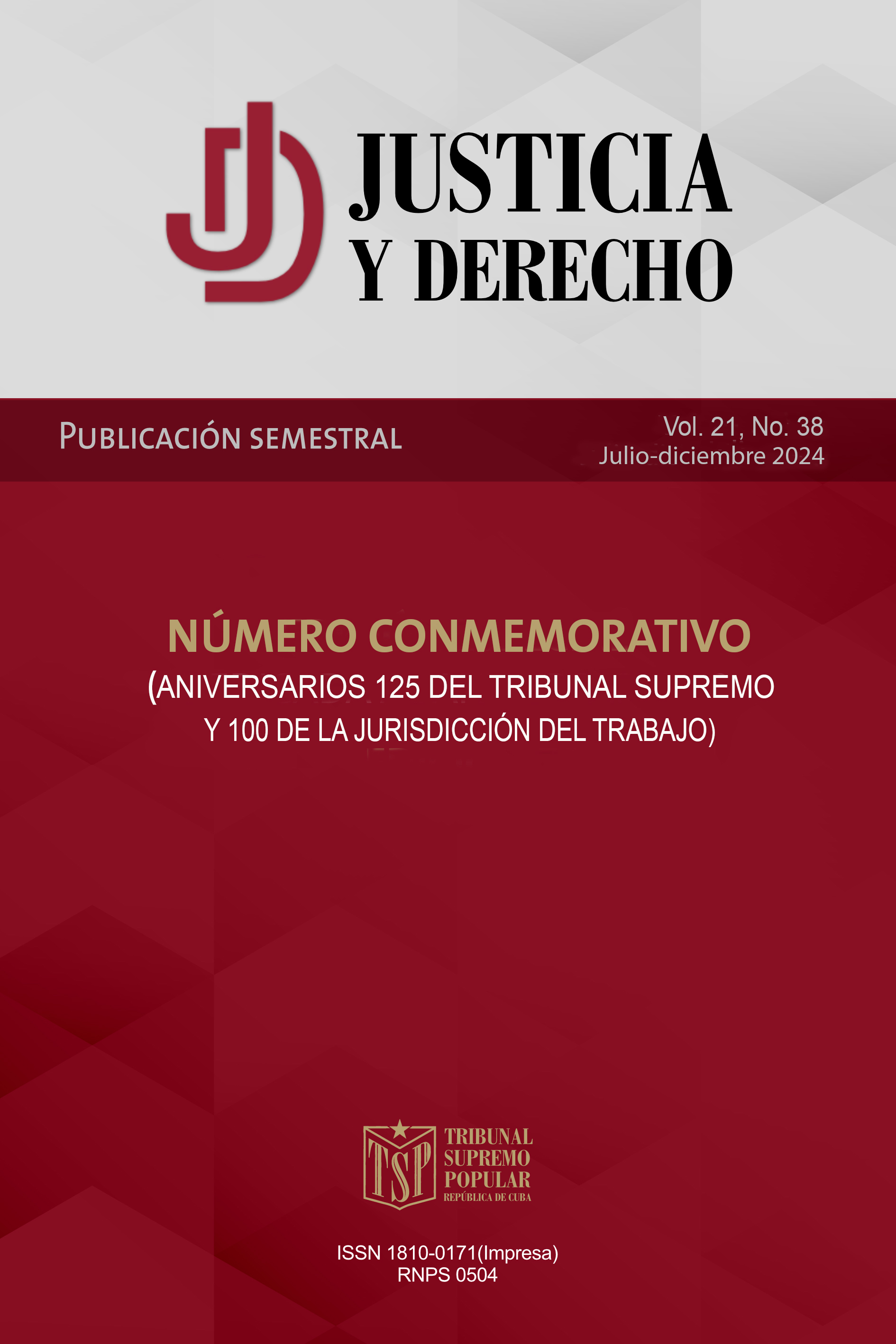THE CIVIL LEGAL CAPACITY IN THE NEW PROCEDURAL MODEL
Main Article Content
Abstract
This article analyses the procedural treatment of the exercise of civil legal capacity in the Process Code, in relation to persons in vulnerable situations, especially those with disabilities. The aforementioned procedural norm has the merit of having regulated an expeditious and guaranteeing channel of knowledge to solve this kind of matters, in correspondence with the principles enshrined in the Constitution and the international treaties to which Cuba is a party, in an effort to provide truly effective judicial protection for persons with disabilities, in line with the supreme value of human dignity, individual autonomy, full participation in the trial, equal opportunities in the procedure and the recognition of a protective regime for assistance, consisting of the designation of support and safeguards, and the adoption of reasonable procedural and conventional adjustments. This regulation makes it possible to bring the administration of justice closer to the universal concepts governing human rights.
Downloads
Article Details
References
Asís, R. (2020). Sobre ajustes de procedimiento y acceso a la justicia. Huri-Age, Red Tiempo de los Derechos, (6), 8. https://redtiempodelosderechos.files.wordpress.com.
Consejo de Gobierno, Tribunal Supremo Popular. Instrucción No. 244. (Abril 23, 2019). GOR-O (32), 473-477.
Consejo de Gobierno, Tribunal Supremo Popular. Instrucción No. 265. (Febrero 1.o, 2022). GOR-E (13), 717-725.
Consejo de Gobierno, Tribunal Supremo Popular. Instrucción No. 278. (Febrero 14, 2023). GOR-E (11), 35-42.
Constitución de la República de Cuba. (Abril 10, 2019). GOR-E (5), 69-116.
Convención internacional sobre los derechos de las personas con discapacidad y su Protocolo facultativo. En Oficina del Alto Comisionado de las Naciones Unidas. (2014). Los principales tratados internacionales de derechos humanos, 271-316.
Convención sobre los derechos del niño y sus protocolos facultativos. En Oficina del Alto Comisionado de las Naciones Unidas. (2014). Los principales tratados internacionales de derechos humanos, 119-179.
Cumbre Judicial Iberoamericana. (2018). 100 Reglas de Brasilia sobre acceso a la justicia de las personas en condición de vulnerabilidad. http://www.cumbrejudicial.org
Ley No. 7, De procedimiento civil, administrativo, laboral y económico. En Mantecón, A. (Rev.). (2015). Ediciones ONBC.
Ley No. 1289, Código de familia. En Carrasco Perera, A. (Ed.). (2000). Código civil y leyes civiles cubanas, 117-157. Ediciones de la Universidad de Castilla-La Mancha.
Ley No. 59, Código civil. En Carrasco Perera, A. (Ed.) (2000). Código civil y leyes civiles cubanas, 15-116. Ediciones de la Universidad de Castilla-La Mancha.
Ley No. 141, Código de procesos (Diciembre 7, 2021). GOR-O (138), 3977-4069.
Ley No. 156, Código de las familias. (Septiembre 27, 2022). GOR-O (99), 2893-2995.
Ley No. 160, de la Fiscalía General de la República. (Enero 13, 2023). GOR-O (5), 87-113.
Mendoza, J. (2015). Derecho Procesal. Parte general. Félix Varela.
Ministerio de Justicia. (1987). Ley 1289 de 14 de febrero de 1975, Código de familia, en vigor desde el 8 de marzo de 1975 (2.a ed., anotada y concordada).
OMS (2001). Clasificación internacional del funcionamiento, de la discapacidad y de la salud (CIF). http://www.aspace.org
Valdés, C. C. (2006). La relación jurídica civil. En Derecho civil, parte general. Félix Varela.
